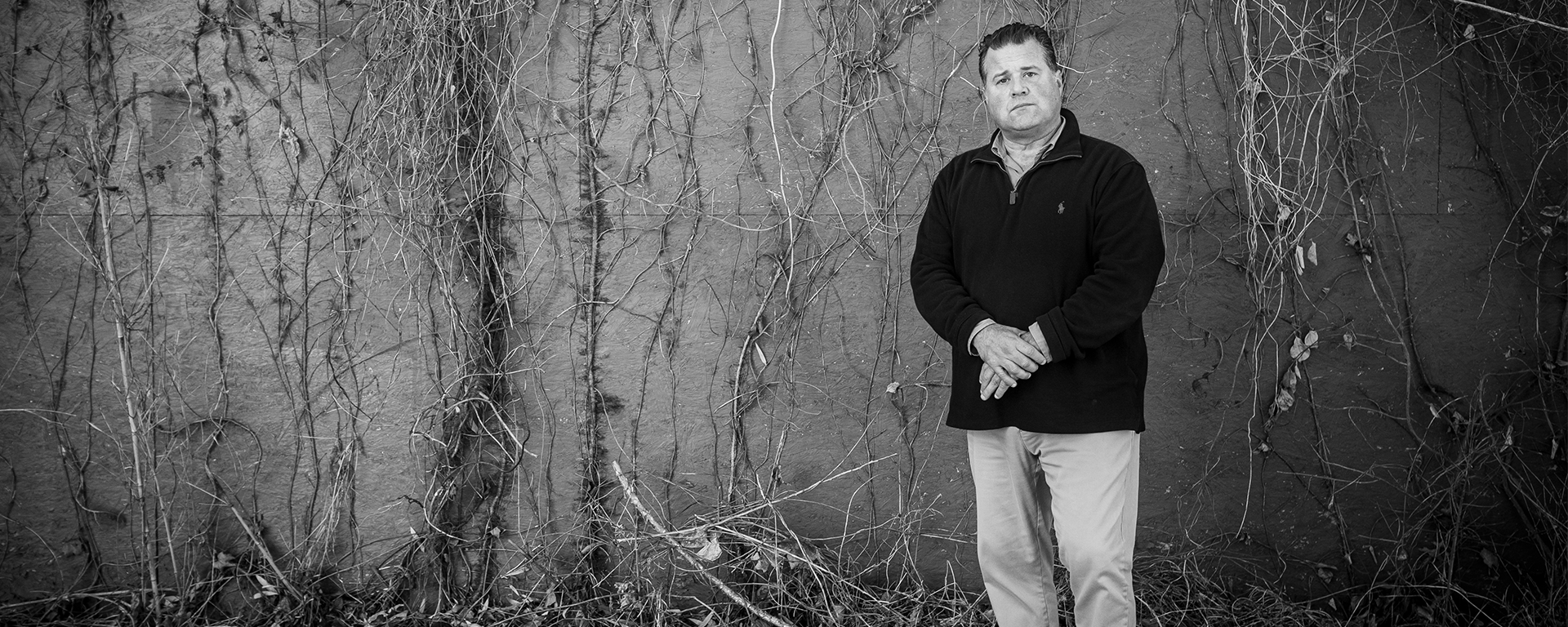The pervasiveness of human trafficking is staggering. Authorities estimate nearly 28 million people are enslaved currently around the world, with traffickers raking in $150 billion a year in this massive criminal enterprise.
Modern-day slavery continues to grow as law-enforcement resources decline, and fighting it seems utterly daunting. Richard Schoeberl (Martin ’92,’94), assistant professor and program chair of criminology and homeland security at UT Southern, faces this crisis armed with law enforcement experience, partnerships with other researchers and advocates across the world, and motivation from within his own home.
Schoeberl specialized in fighting and investigating violent crime, human trafficking, terrorism and organized crime for the FBI and National Counterterrorism Center, with more than 25 years of combined experience. He was first hired in 2014 at Martin Methodist, now UT Southern, to teach counterterrorism, but that focus soon shifted.
While scouting jobs he wanted to pass along to his students, he came across information about Hope for Justice, a global nonprofit founded in the United Kingdom in 2008 and with a location in Nashville. Intrigued, Schoeberl met with a representative to learn more. He brought home a book about the organization’s work and read about a 12-year-old girl who had been sex trafficked since she was 6.
“Having a 12-year-old myself at the time, it hit me hard. It resonated with me, and I realized that something had to be done,” Schoeberl says. But that resonance took on a deeper tone when his 12-year-old daughter also read the book and then asked him if he was thinking about working for the group.
“I said, ‘Yeah, I think I am.’ And she says, ‘Well, I’m very proud of you,’” Schoeberl says.
After his daughter walked out of the room, his wife, Mitzi Coats Schoeberl (Martin ’94), leaned out of the kitchen, to say, “I don’t guess you’re thinking about doing this anymore, are you?’”
“And I said, ‘No, I feel like I’ve got the skills that I’m not utilizing,’” Schoeberl recalls.

“I can see how teaching at a college and researching can be morphed into public service and be integrated into training the next wave of law-enforcement professionals on how to not only recognize this clandestine crime but how to investigate it.”
Schoeberl, who serves as program chair in criminology, now concentrates on developing and providing training for law enforcement to identify and help victims and investigate the crimes to secure prosecution of the criminals. He created the training platform the U.S. Department of State uses to rate countries on the prevalence of human trafficking and help recognize the victims.
Schoeberl, who grew up in Pulaski, home to UT Southern, earned his bachelor’s and master’s degrees at UT Martin and his doctorate from Nova Southeastern. He also is part of a consortium of researchers at Baylor University studying the role of information technology in sex trafficking.
Human trafficking encompasses several forms of slavery, and to be “trafficked,” someone does not have to be abducted and taken from one place to another. Sex trafficking includes forced acts in person, pornography and live-streaming with the perpetrator acting through the online platform. Labor trafficking includes forced work inside a home or business.
“We are at an extremely pivotal point in attacking this problem,” Schoeberl says.
Law enforcement agencies find their resources are lacking, he says, while increasing migration across the southern U.S. borders, increasing numbers of young people going online—especially during the pandemic—and being isolated from parents and other authority figures are some of the factors making conditions easier for traffickers.
Schoeberl also offers training to other frontline workers who may come in contact with trafficking victims, such as nurses, restaurant and hotel employees, and bank tellers.
“We know that an upward of 87 percent of human trafficking victims have come in contact with health care providers and gone unidentified,” Schoeberl says. He points to an extended time his daughter spent in the hospital, and he asked nurses if they had ever received training to recognize victims. They all said no. “If people don’t know how prevalent this problem is, then they don’t take the training as a priority, and that’s the first step in our identification of victims,” he says.

While every victim is different, research has shown certain traits make people more vulnerable to trafficking, Schoeberl says. These include living in poverty, abusing drugs, being in foster care and running away from home. Schoeberl has interviewed victims who resorted to drugs to cope with being trafficked and became addicted. One woman told him how she was forced to service men 20 times a day, and she said she “became chemically dependent upon the drug. Then she became dependent upon the trafficker who gave her those drugs. “It’s really just a wicked combination of a multitude of things that keeps someone in this vicious cycle,” he says.
Greater public awareness of the problem is key to helping identify victims.
“I always tell people, I’d rather you say something and be wrong than not have said something and be right because that’s one more day that person has to live in exploitation,” he says.
Even people who do not fit into those common traits of victims can be vulnerable, Schoeberl says. Parents should be vigilant when they allow children and teens to be online. The average age of the first encounter of sexual exploitation is 12 to 14, and Schoeberl worked on a case during the holidays of a girl whose parents gave her a virtual reality headset. She met someone while playing online that she thought was a 14-year old boy from Scotland. They talked via Snapchat and then Facetime, and then she received emails and phone calls.
“Her mother was a school counselor, and she had received training that we delivered on human trafficking. She contacted us and asked me if I would look at it,” he recalls.
The investigation revealed her online friend lived in Scottsdale, Arizona, and was a 44 year-old man who just got out of prison.
In addition to training and awareness, Schoeberl says stiffer penalties for traffickers is another key to fighting the problem.
“A lot of times people feel like, if we rescue a victim, we’re done. But there’s still a perpetrator out there. Nobody just victimizes one person,” he says.
Facts about Human Trafficking:
- 27.6 million people enslaved globally (19.9 million in labor, 1.4 million domestic servants, 6.3 million sex trafficked)
- 54% of victims are girls and women
- 1 in 4 victims are children
- 400,000+ people in the United States live in modern slavery
- 51,667 substantive reports of sex and labor trafficking received by the National Human Trafficking Hotline in the U.S. in 2020.
—Hope For Justice, citing statistics from the International Labour Organization, Walk Free Foundation, International Organization For Migration
Victim Vulnerabilities:
- Abuse or neglect at home
- Homeless or runaway
- Mental health issues
- Foster system
- Poverty
- Recent displacement or migration
- Substance abuse
– Hope For Justice www.hopeforjustice.org



